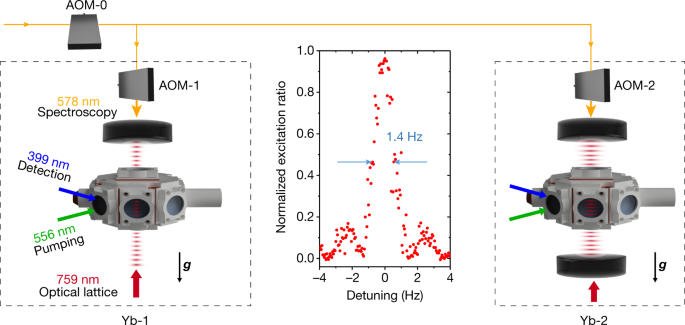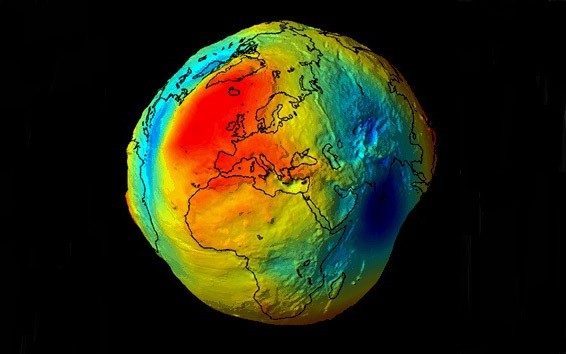 |
| Simplified experimental scheme. |
The first atomic clock was created in 1955 and used the energy transition of an electron in a cesium-133 atom as its frequency referent. Cesium-133 atoms absorb energy at wavelengths of 3.2 cm, which means the wave oscillates at a frequency of 9,192,631,770 cycles per second. When cesium-133 atoms are hit with microwaves at this frequency, it causes the atom’s single outermost electron to rapidly transition between energy states at the same rate. In this case, the electron transitioning between a high and low energy state over 9 billion times a second is analogous to a rapidly swinging pendulum in a conventional clock. In fact, the transition of the cesium-133 electron was used to formally define the length of a second in 1967.
Now researchers at the National Institute for Standards and Technology (NIST) have developed an atomic clock that is so precise that our models of Earth’s gravity aren’t accurate enough to keep up with it. As detailed in a paper published this week in Nature , the atomic clock could pave the way for creating an unprecedented map of the way the Earth’s gravity distorts space-time and even shed light on the development of the early universe.
 |
| Image Geoid: Swiss Office of Topography |
Abstract of the paper
The passage of time is tracked by counting oscillations of a frequency reference, such as Earth’s revolutions or swings of a pendulum. By referencing atomic transitions, frequency (and thus time) can be measured more precisely than any other physical quantity, with the current generation of optical atomic clocks reporting fractional performance below the 10−17 level1,2,3,4,5. However, the theory of relativity prescribes that the passage of time is not absolute, but is affected by an observer’s reference frame. Consequently, clock measurements exhibit sensitivity to relative velocity, acceleration and gravity potential. Here we demonstrate local optical clock measurements that surpass the current ability to account for the gravitational distortion of space-time across the surface of Earth. In two independent ytterbium optical lattice clocks, we demonstrate unprecedented values of three fundamental benchmarks of clock performance. In units of the clock frequency, we report systematic uncertainty of 1.4 × 10−18, measurement instability of 3.2 × 10−19 and reproducibility characterized by ten blinded frequency comparisons, yielding a frequency difference of [−7 ± (5)stat ± (8)sys] × 10−19, where ‘stat’ and ‘sys’ indicate statistical and systematic uncertainty, respectively. Although sensitivity to differences in gravity potential could degrade the performance of the clocks as terrestrial standards of time, this same sensitivity can be used as a very sensitive probe of geopotential5,6,7,8,9. Near the surface of Earth, clock comparisons at the 1 × 10−18 level provide a resolution of one centimetre along the direction of gravity, so the performance of these clocks should enable geodesy beyond the state-of-the-art level. These optical clocks could further be used to explore geophysical phenomena10, detect gravitational waves11, test general relativity12 and search for dark matter
Via Motherboard
No comments:
Post a Comment